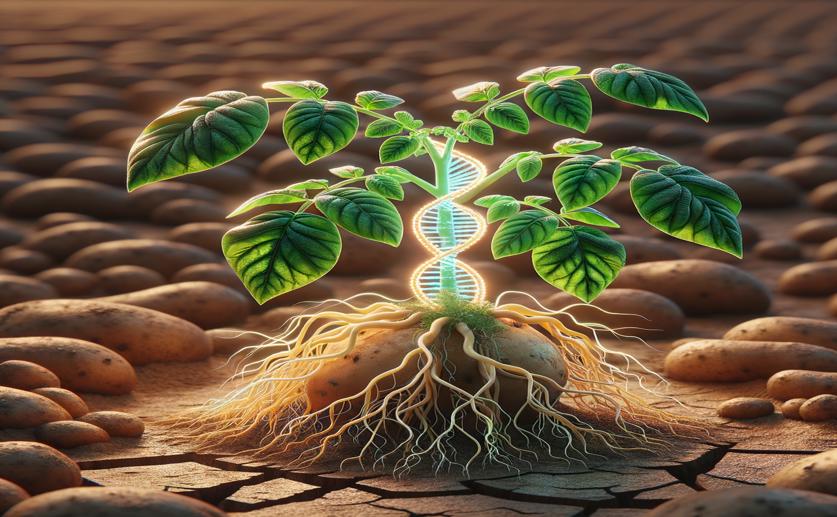
Decoding Potato DNA Uncovers Drought Survival Tactics
Greg Howard
8th March, 2024

Image Source: Natural Science News, 2024
Key Findings
- German researchers found genes linked to drought tolerance in potatoes
- They identified 10 key genes that help potatoes survive dry conditions
- This discovery could lead to breeding drought-resistant potato varieties
AgricultureGeneticsPlant Science
References
Main Study
1) Whole-genome sequencing of tetraploid potato varieties reveals different strategies for drought tolerance.
Published 5th March, 2024
https://doi.org/10.1038/s41598-024-55669-3
Related Studies
2) Gibberellin in tomato: metabolism, signaling and role in drought responses.
3) SYNTAXIN OF PLANTS81 regulates root meristem activity and stem cell niche maintenance via ROS signaling.
4) Potato Cultivar Identification in South Africa Using a Custom SNP Panel.
5) Responses of yield, quality and water use efficiency of potato grown under different drip irrigation and nitrogen levels.



 5th March, 2024 | Greg Howard
5th March, 2024 | Greg Howard